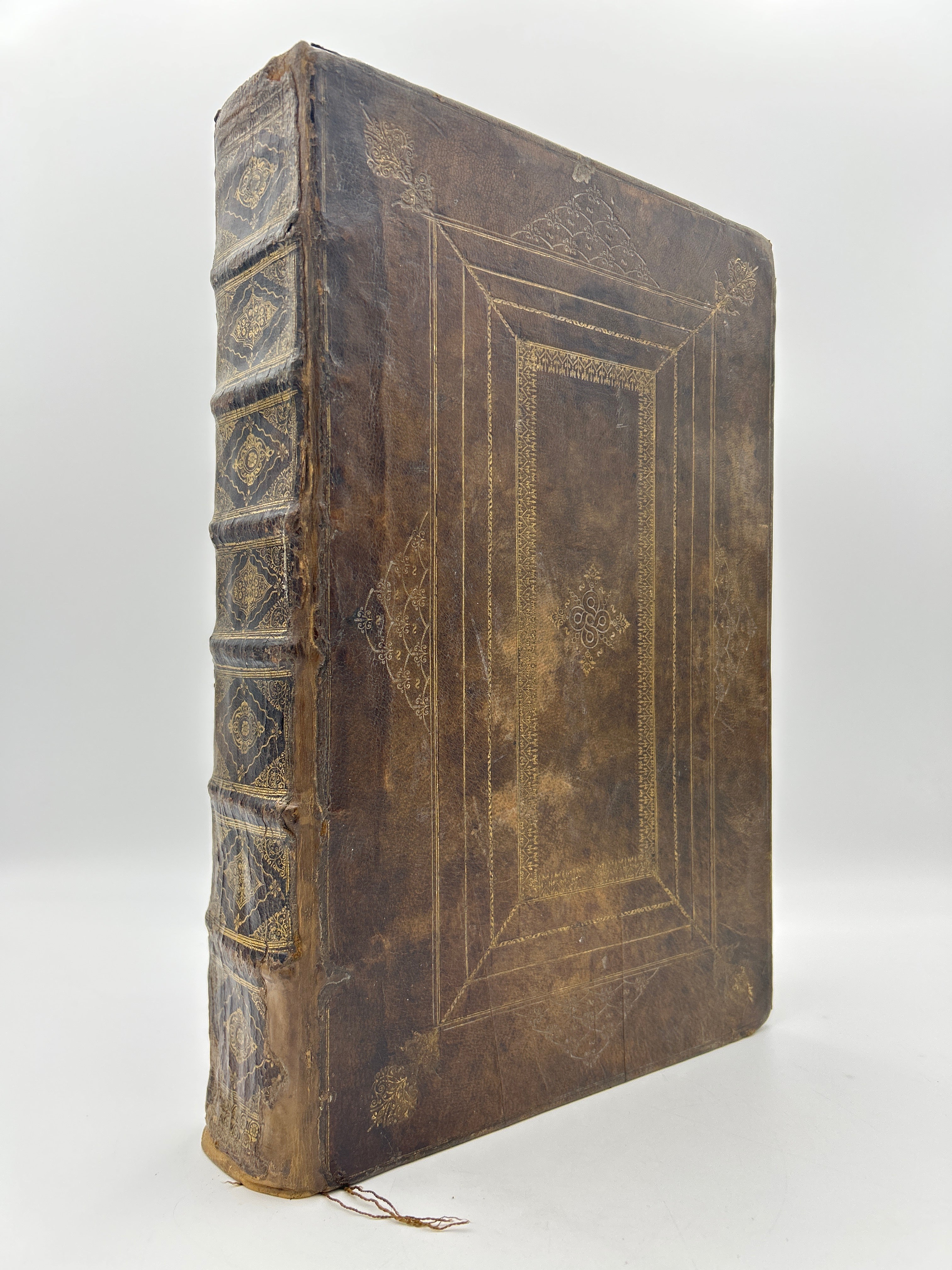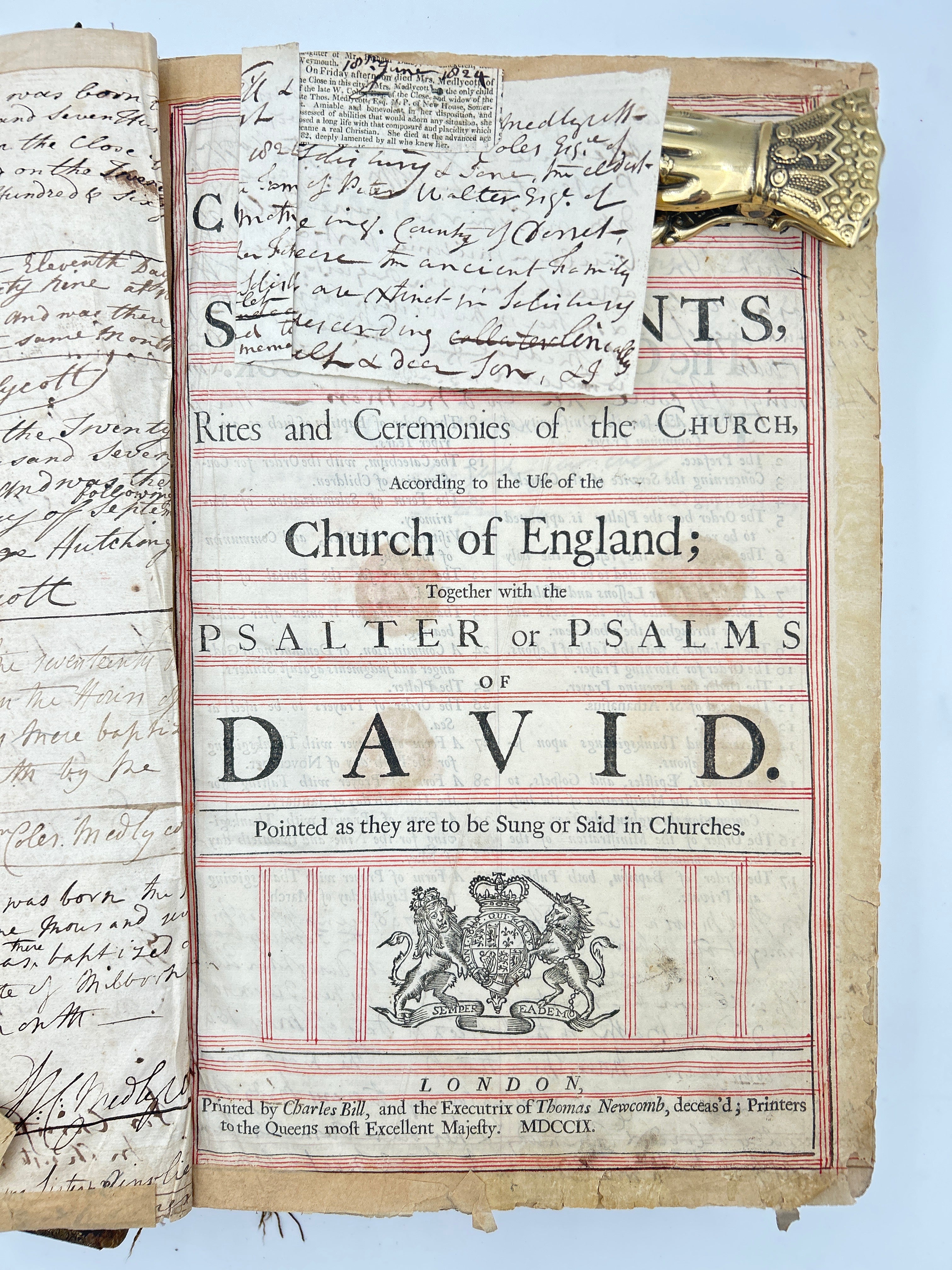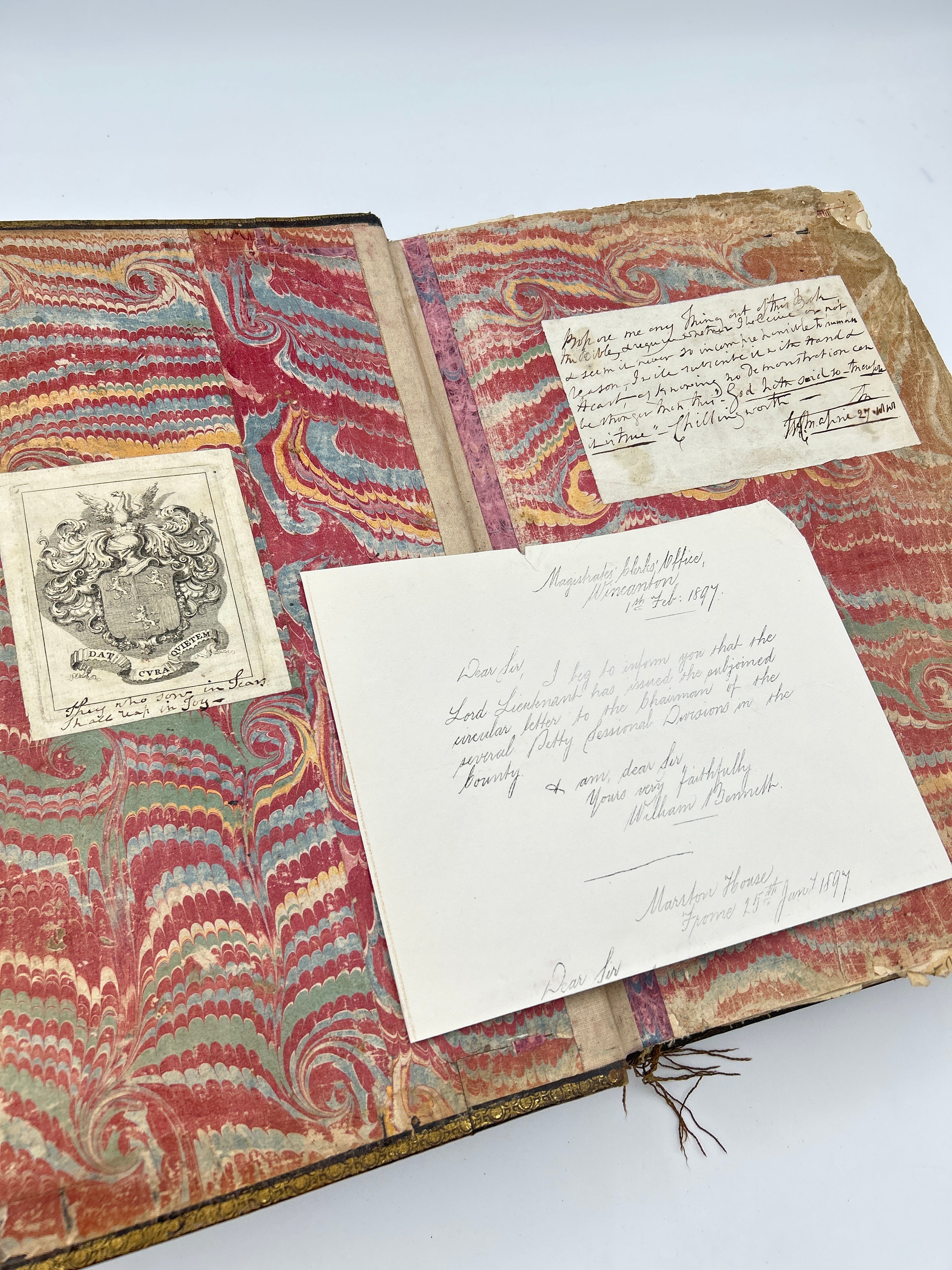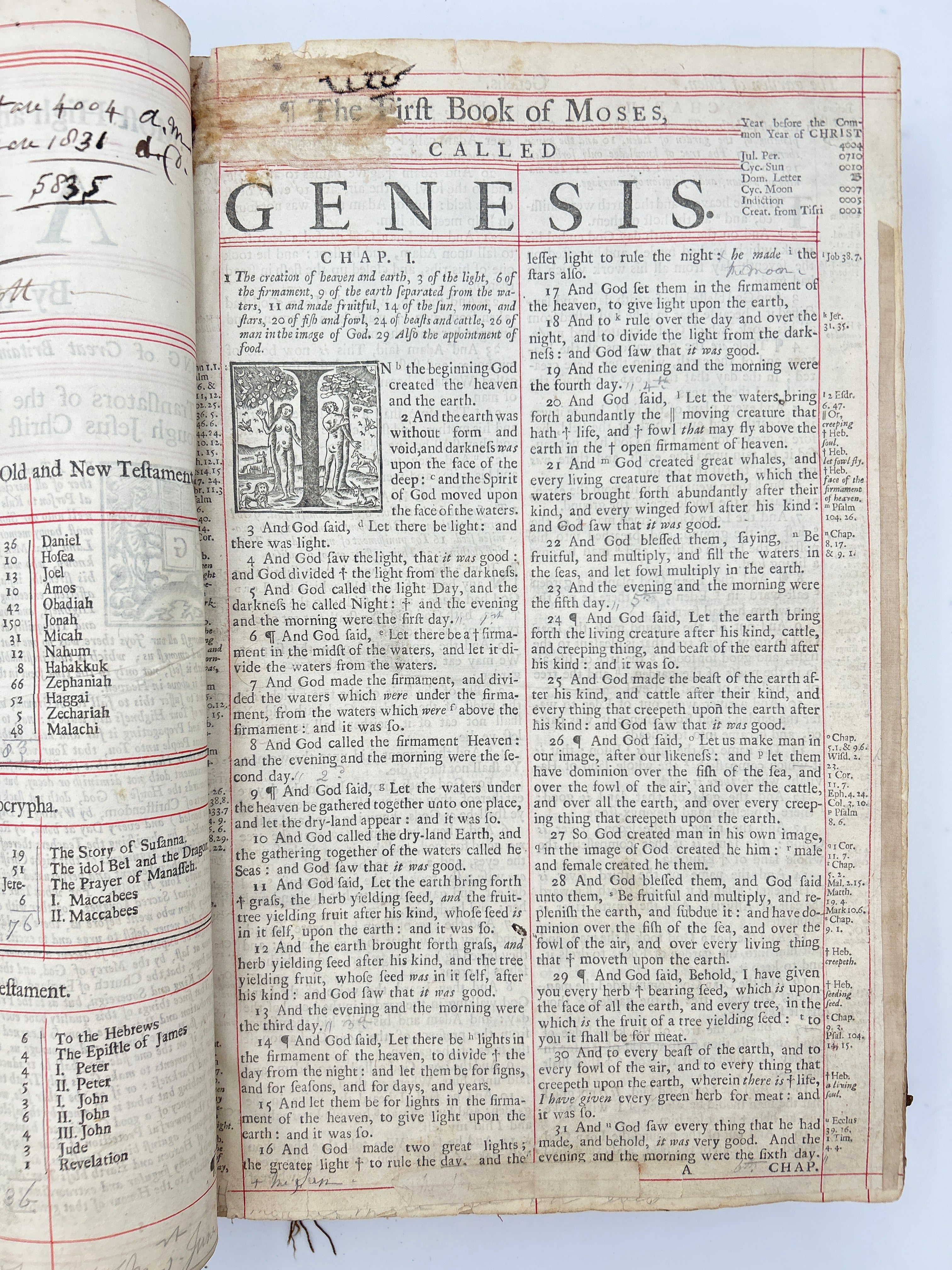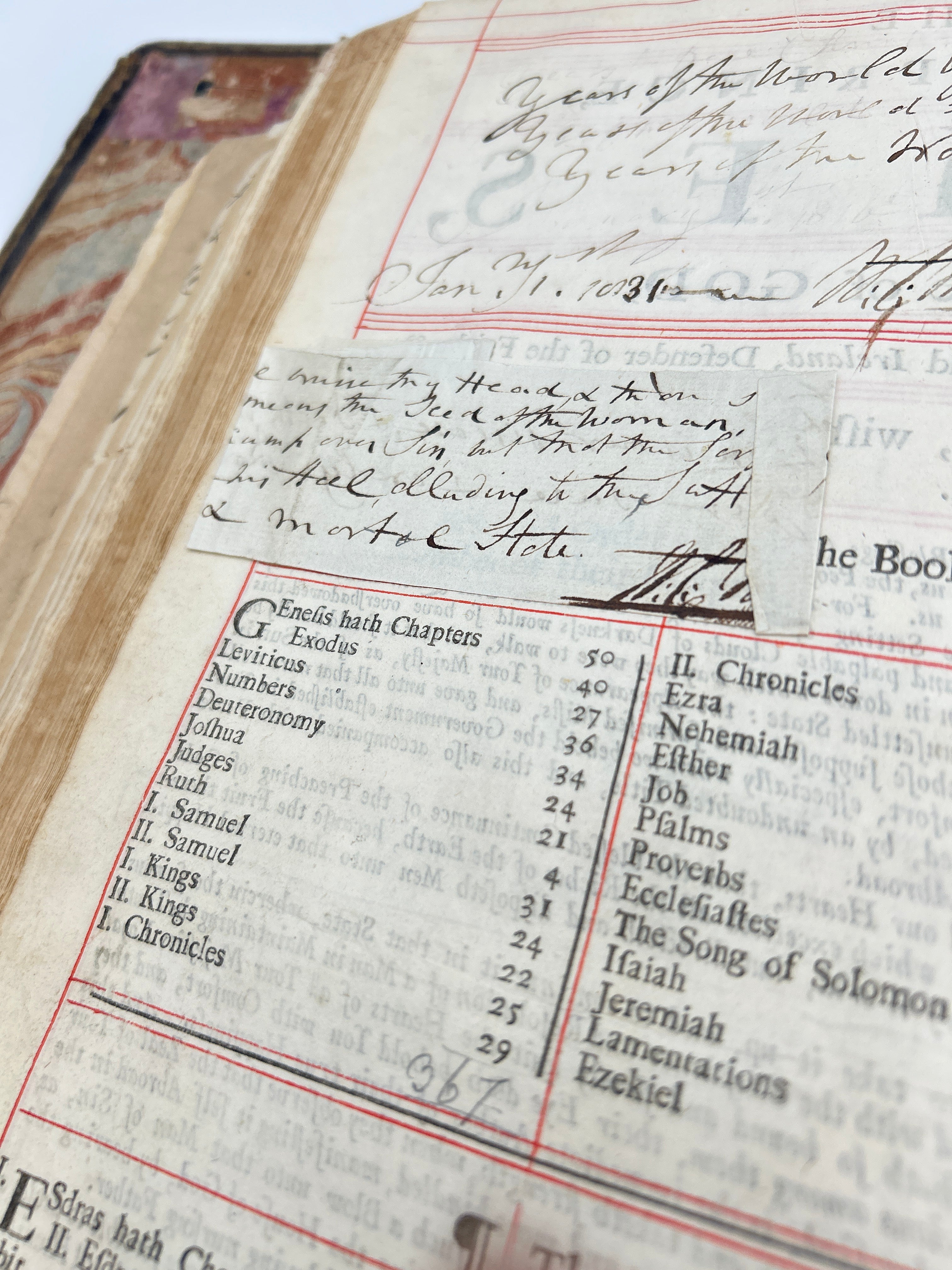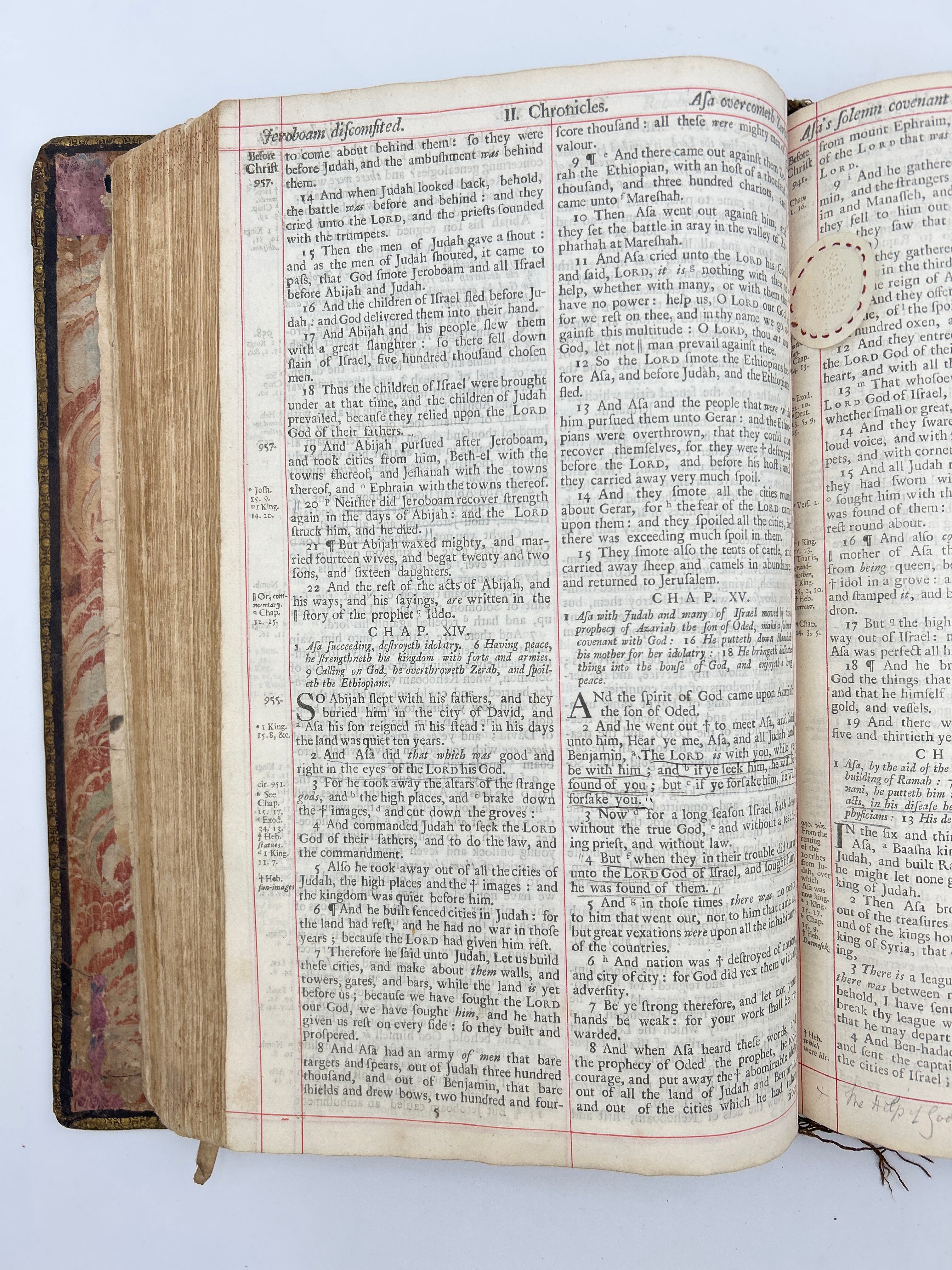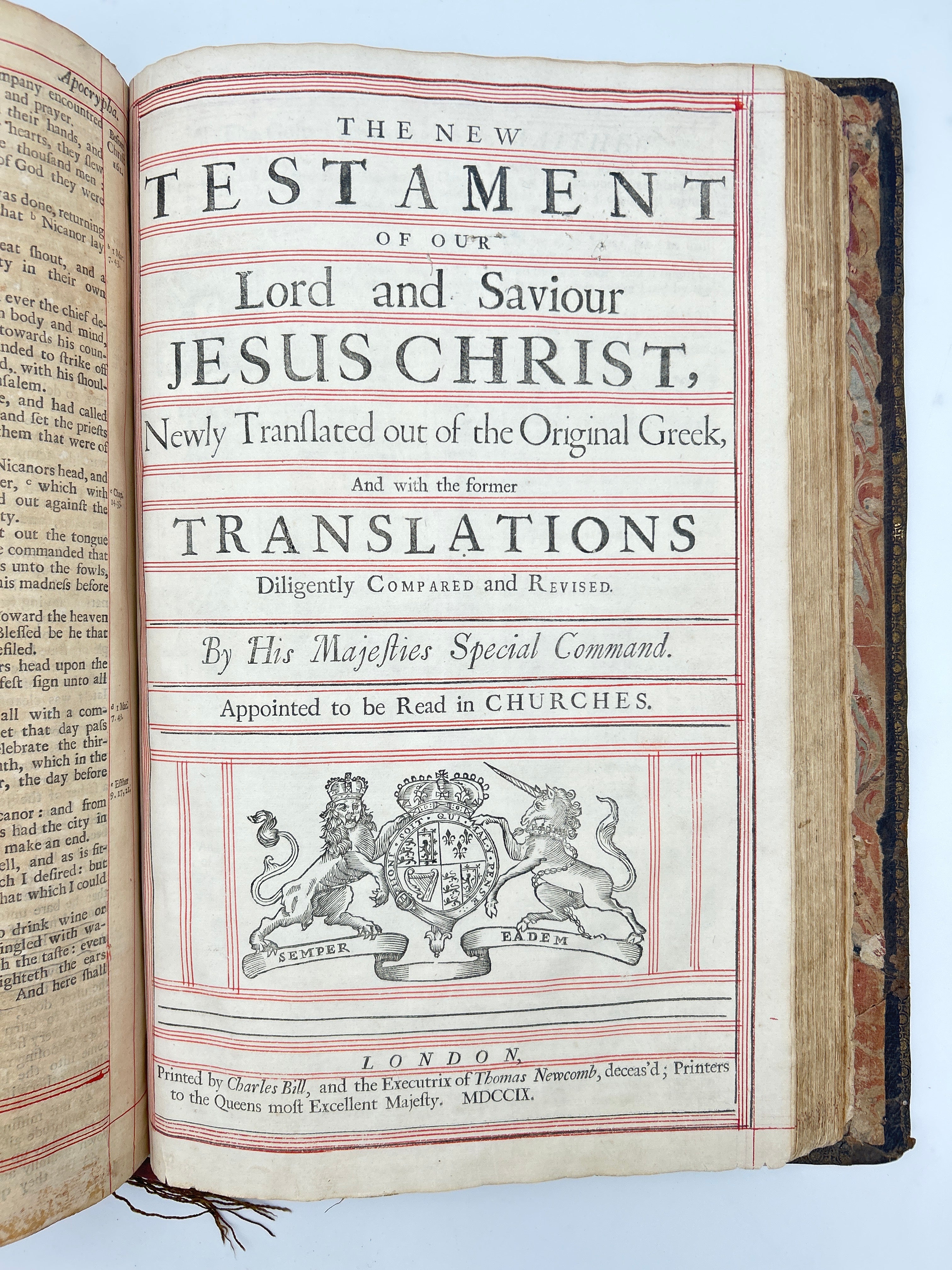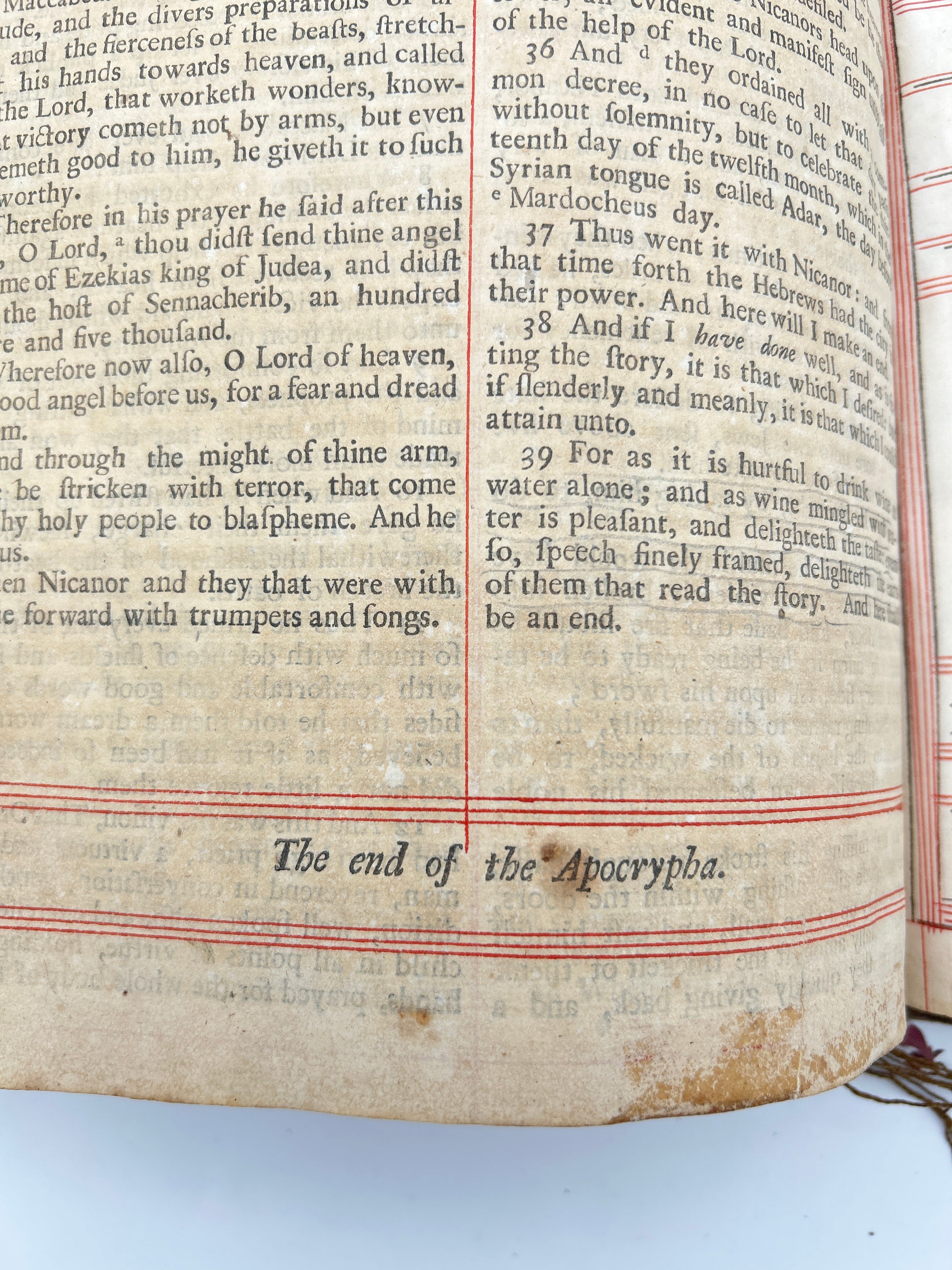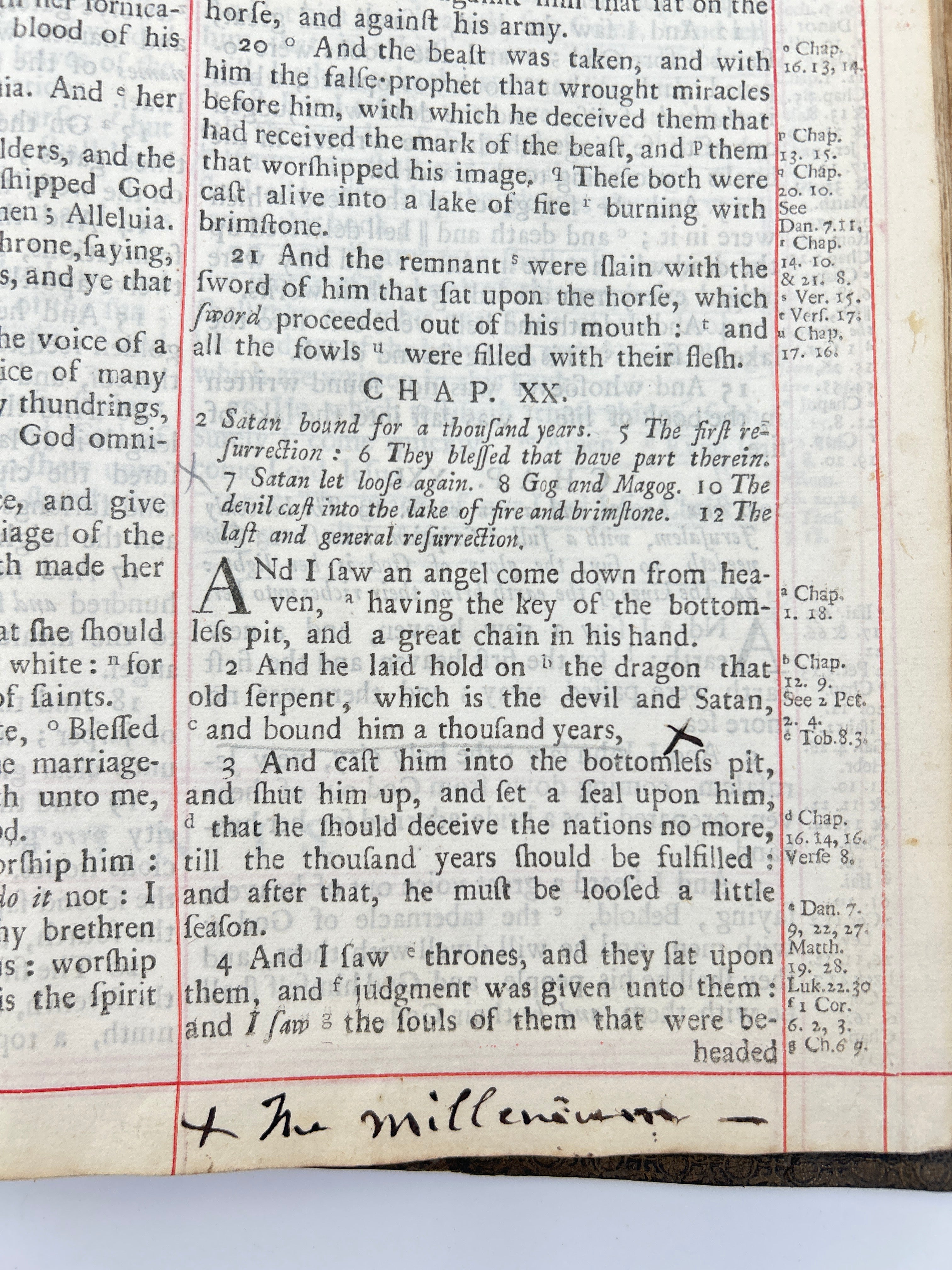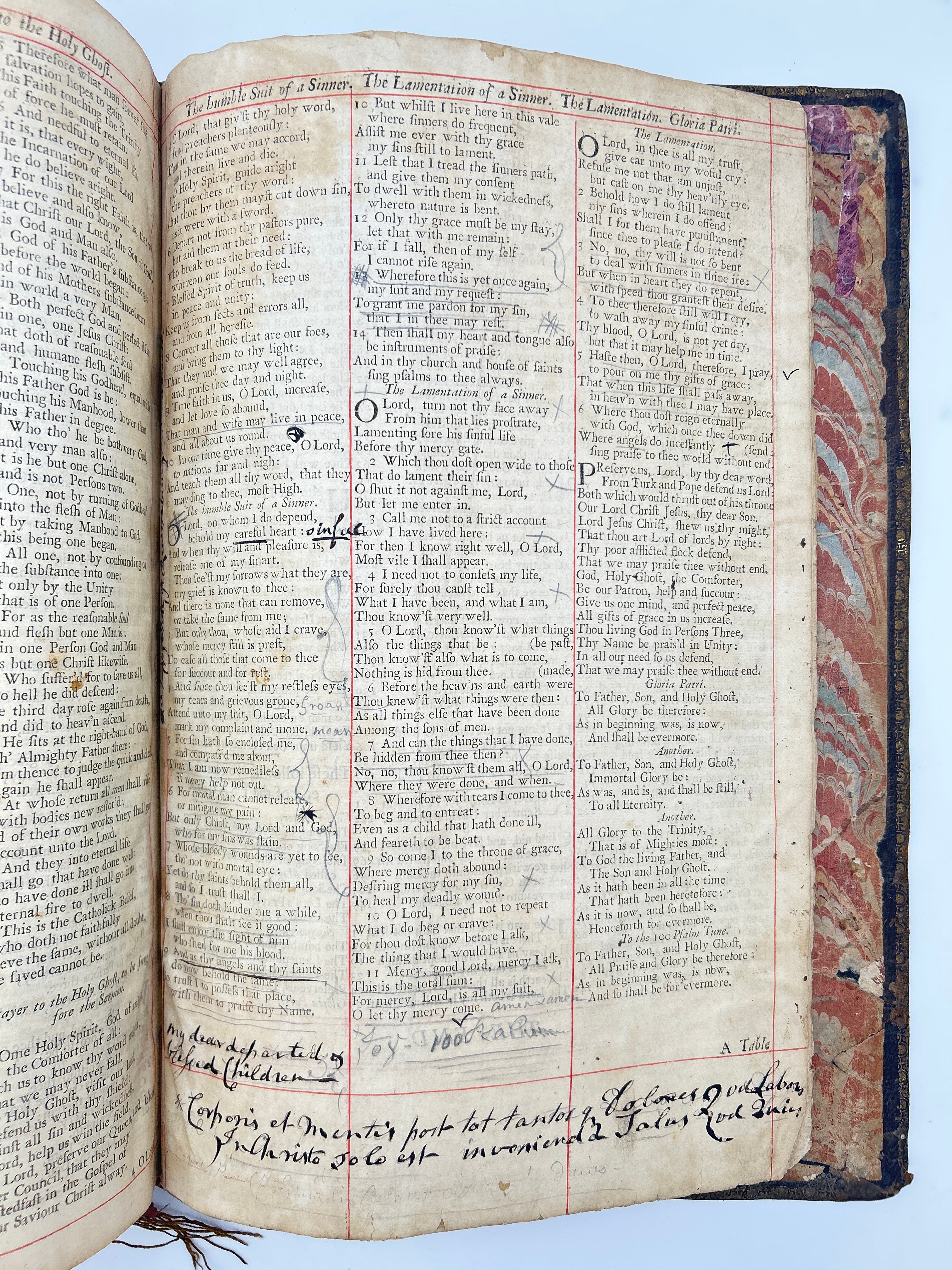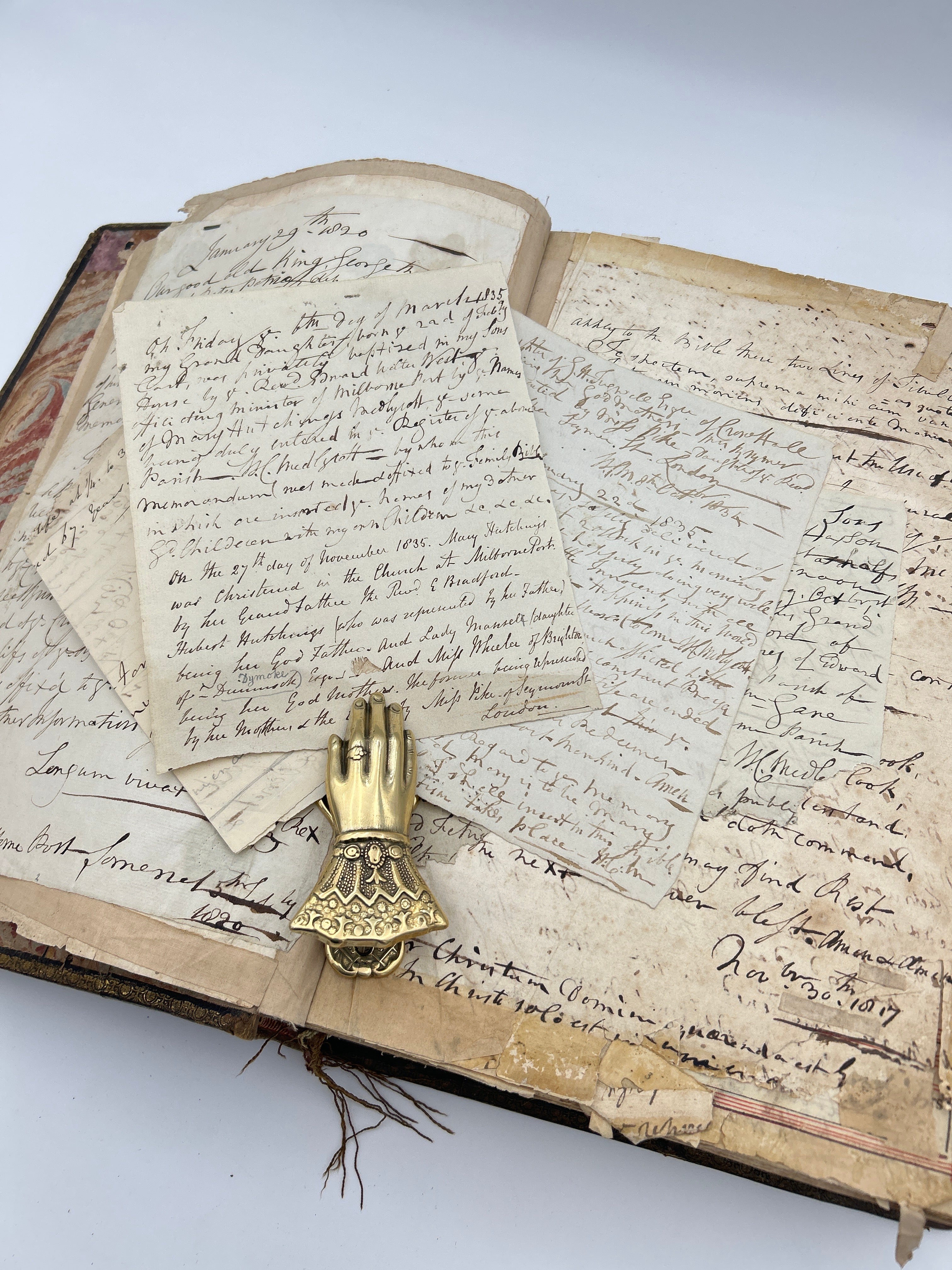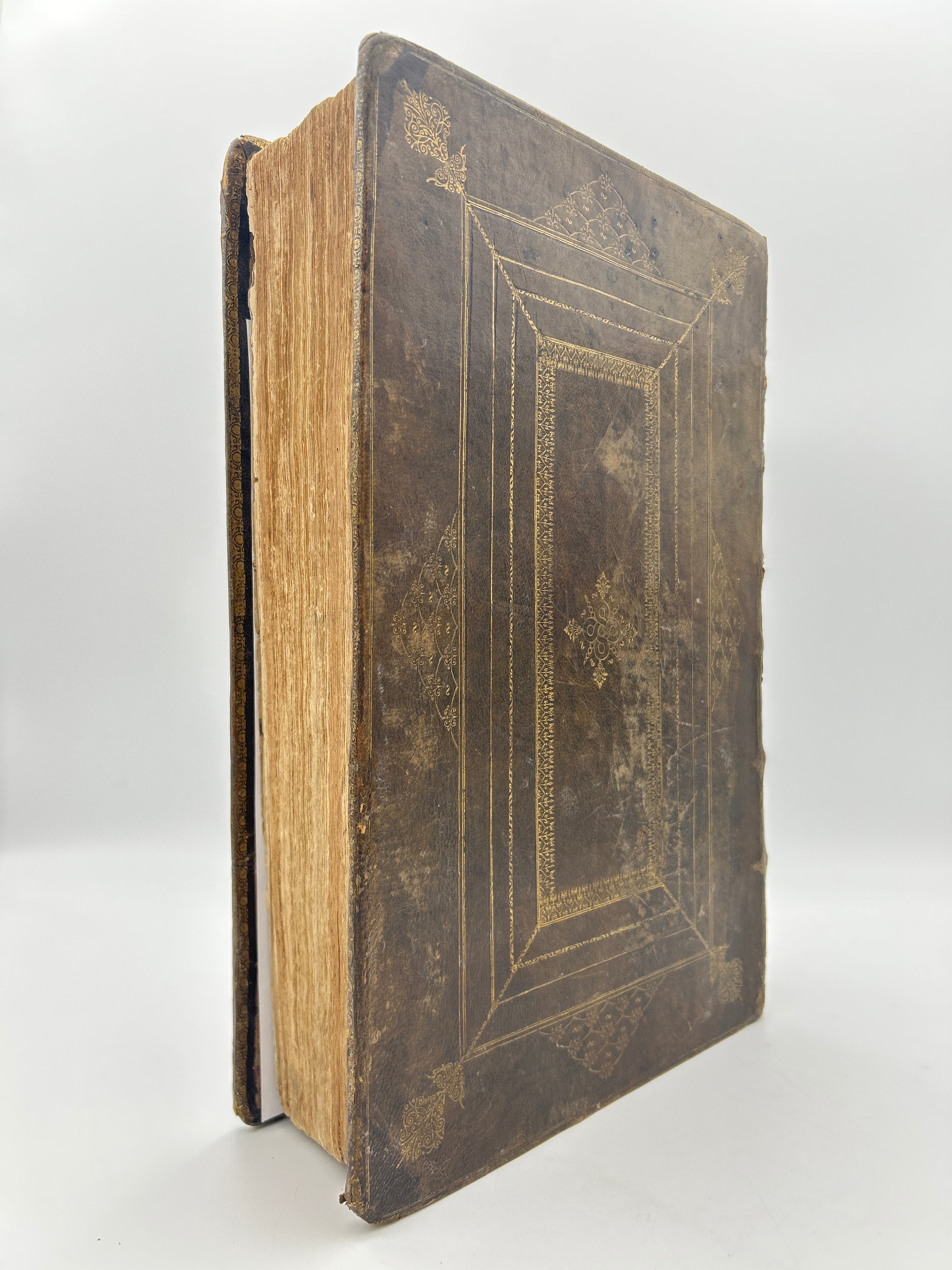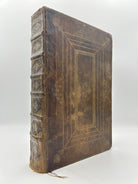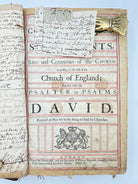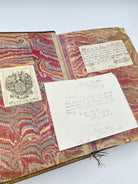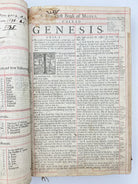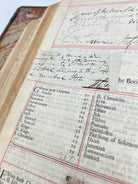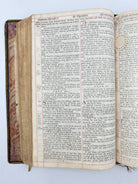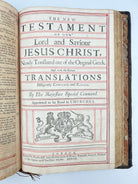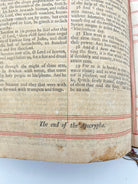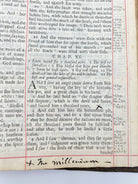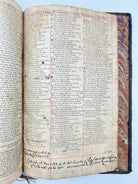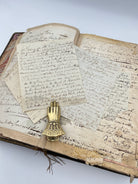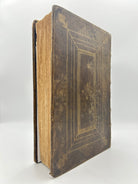Holy Bible with Book of Common Prayer 1709
Couldn't load pickup availability
5B Holy Bible with Old and New Testaments, Book of Common Prayer, and the whole book of Psalms. London: Printed by Charles Bill printer to the Queens most Excellent Majesty. 1709
Notes
The Holy Bible is the sacred scripture of Christianity, containing the Old and New Testaments, and has been central to Christian worship, doctrine, and daily life for centuries. In the English-speaking world, the King James Version (first published in 1611) became the most widely read and enduring translation, admired for its literary beauty and theological clarity. By the 17th and 18th centuries, the Bible was often produced in finely printed editions for both public and private use, sometimes accompanied by commentary or concordances. These Bibles were not only devotional texts but also heirlooms, often passed down through generations and used to record family events like births, marriages, and deaths.
The Book of Common Prayer, first issued in 1549 and revised multiple times thereafter, is the foundational liturgical text of the Church of England. It contains the prayers, rites, and services for the Anglican tradition, including daily morning and evening prayers, the Eucharist, baptisms, marriages, funerals, and special holy days. Written primarily by Thomas Cranmer, its poetic and accessible language helped shape not only Anglican worship but also the English literary tradition. Throughout the 17th and 18th centuries, it was commonly bound together with the Bible in a single volume, reflecting its role as a daily guide to both personal devotion and communal worship.
Charles Bill was a prominent English printer in the late 17th and early 18th centuries, serving as Printer alongside John Newcomb under royal patent. This role gave him the exclusive right to print official documents, proclamations, and most notably, editions of the Holy Bible and the Book of Common Prayer. His name frequently appears on title pages of religious and legal texts from this period, indicating both the authority and quality of his press. Bill’s work helped ensure the widespread and standardized dissemination of core English religious texts during a time of political and religious transformation, reinforcing both royal authority and the Anglican Church’s central place in British life.
Description
contemporary Morocco with guilt panel and corner pieces. Six raised bands with compartments decorated and gilt. Marbled in papers. Entirety ruled in red. Corners bumped and rubbed joints repaired and strengthened. Head and foot of spine bumped and worn. Some slight rubbing two extremities and scuffing two boards. Preliminary annotated blank leaves are torn and afraid at the edges. Title page to be CP is frayed at the edges and other leaves have been repaired at the edges mostly in the prayer book but also in other places.
Annotated and underlined throughout and pin and pencil with small pieces of paper notes with handwritten notes, pinned or tipped in. On the blank preliminaries and also loosely inserted at beginning our numerous manuscript notes dating between 1819 and 1835. The author of most of these notes is in W. Medlycoff of Milborne Port. Sir William Coles Medlycott was the first MP for Milborne Port in 1790-91 and was created the first Baronet in 1808. Front pastedown with armorial bookplate of Medlycott family. Among the Notes is a very touching letter by Sir William to his son (also William) dated 31st of July 1816 encouraging him to “read the scriptures and remember God in all your ways he will never leave nor forsake you.”
